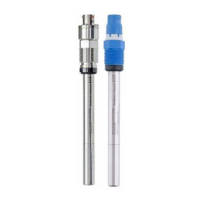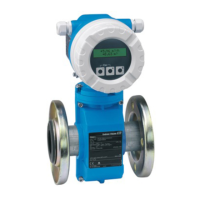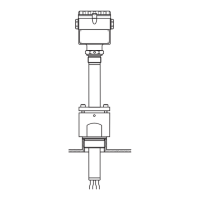Maintenance Oxymax COS22
22 Endress+Hauser
10 Maintenance
Take all the necessary precautions in time to ensure the operational safety and reliability
of the entire measuring system.
NOTICE
Effects on process and process control
‣
When carrying out any work on the system, take into account possible repercussions
for process control or the process itself.
‣
For your own safety, only use genuine accessories. With genuine parts, the function,
accuracy and reliability are also ensured after maintenance work.
10.1 Maintenance schedule
Maintenance cycles depend to a great extent on the operating conditions.
The following rule of thumb applies:
• Constant conditions, e.g. power plant = long cycles (1/2 year)
• Greatly varying conditions, e.g. daily CIP cleaning = short cycles (1 month or shorter)
The following method helps you determine the necessary intervals:
1. Inspect the sensor one month after commissioning. Take it out of the medium and
dry it.
2. After 10 minutes, measure the oxygen saturation index in air.
Decide depending on the result: If the measured value is not 100 ±2 %SAT, you
must maintain the sensor. Otherwise, double the length of time to the next
inspection.
3. Proceed as per Point 1 after two, four and/or eight months. In this way, you can
determine the optimum maintenance interval for your sensor.
Particularly in the case of widely fluctuating process conditions, damage may occur to
the membrane even within a maintenance cycle. You can recognize this by
implausible sensor behavior.
10.2 Maintenance tasks
The following tasks are mandatory:
• Clean the sensor and the glass body with anode and cathode (particularly if membrane is
dirty)
• Replacement of wear parts or consumables:
– Electrolyte
– Membrane body
–
– Sealing ring
• Check the measuring function:
1. Remove the sensor from the medium.
2. Clean and dry the membrane.
3. After about 10 minutes, measure the oxygen saturation index in air (without
recalibration).
4. The measured value should be 100 ± 2 % SAT.
• Recalibration (if desired or required)

